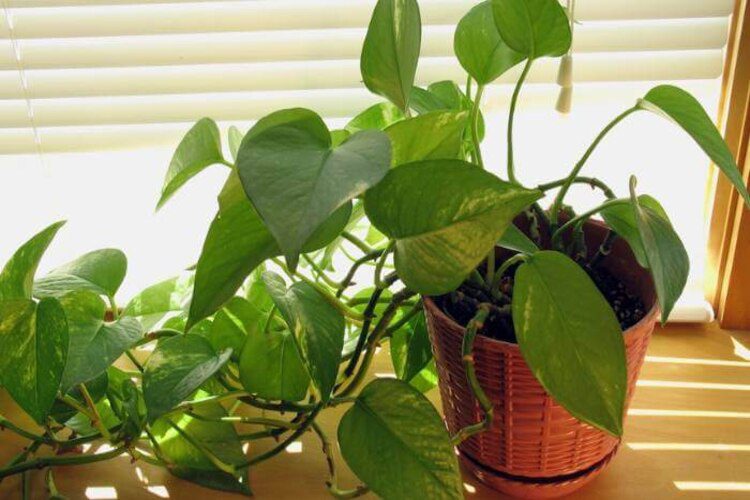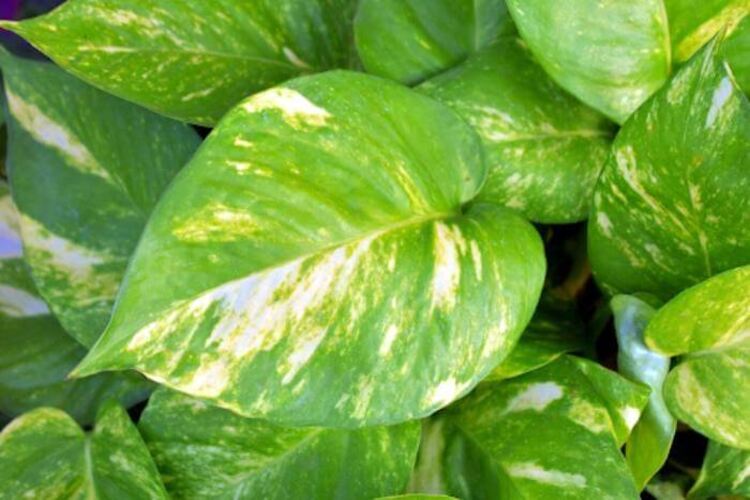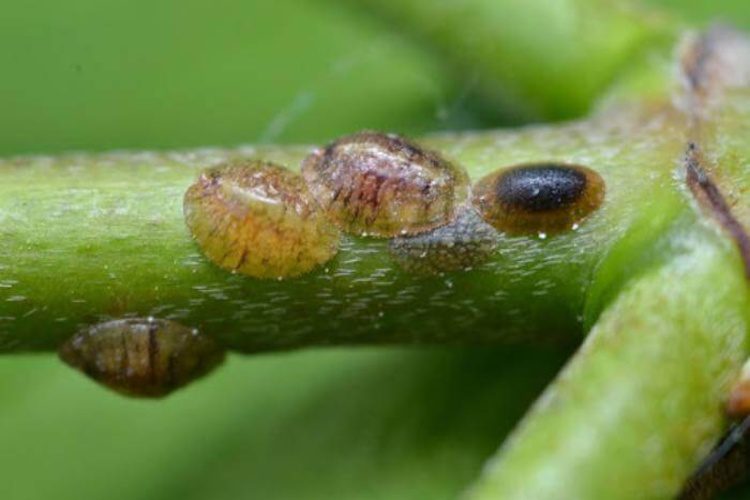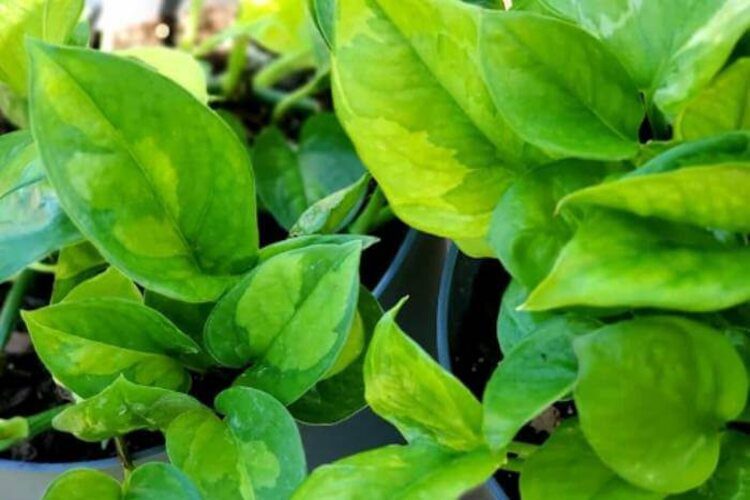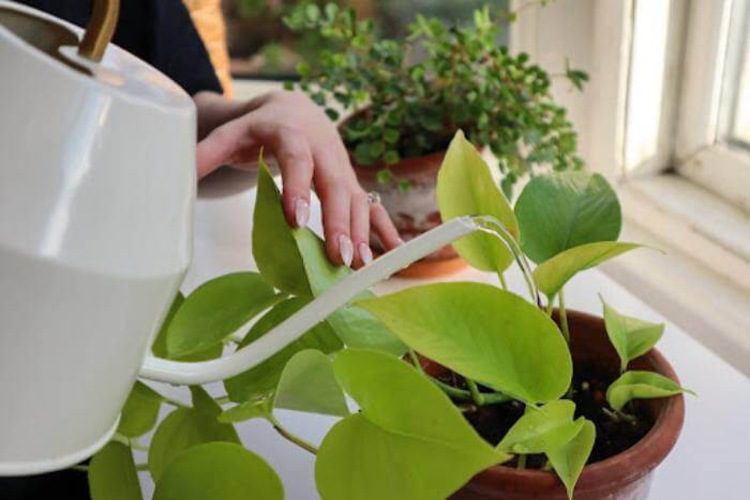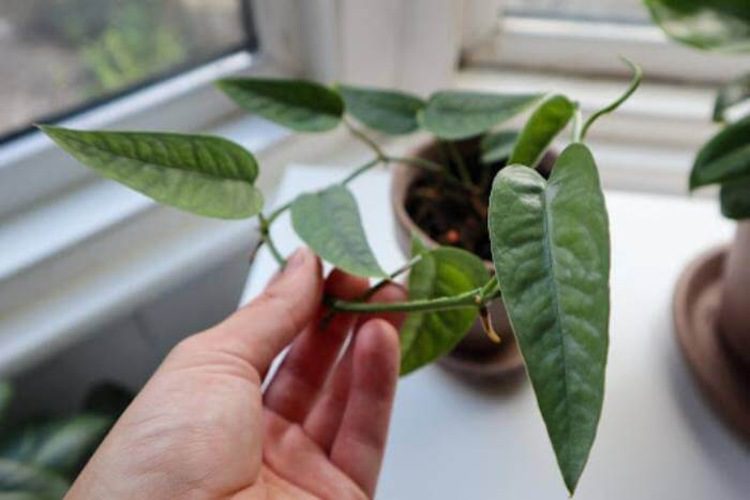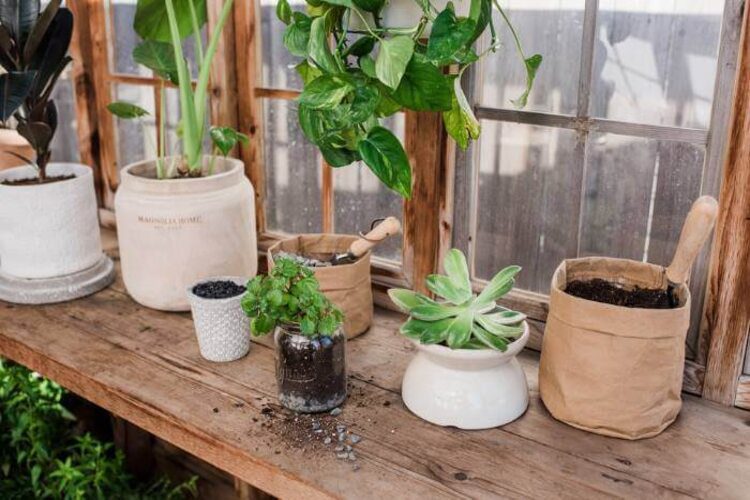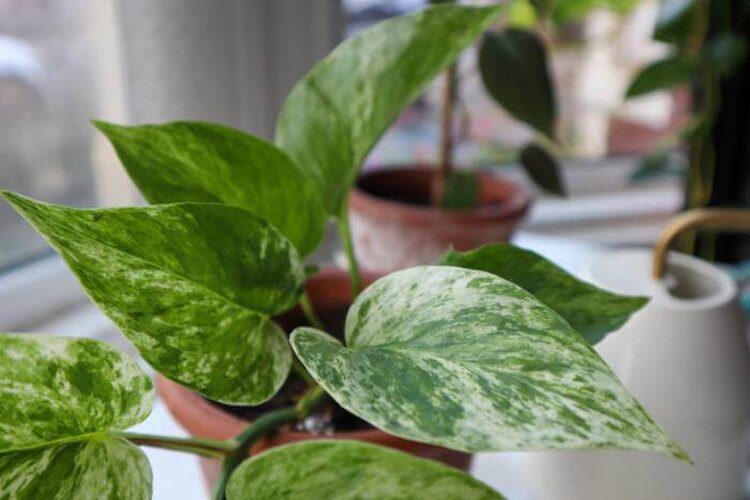Pothos Aerial Roots: Have You Known About This Extra Part?
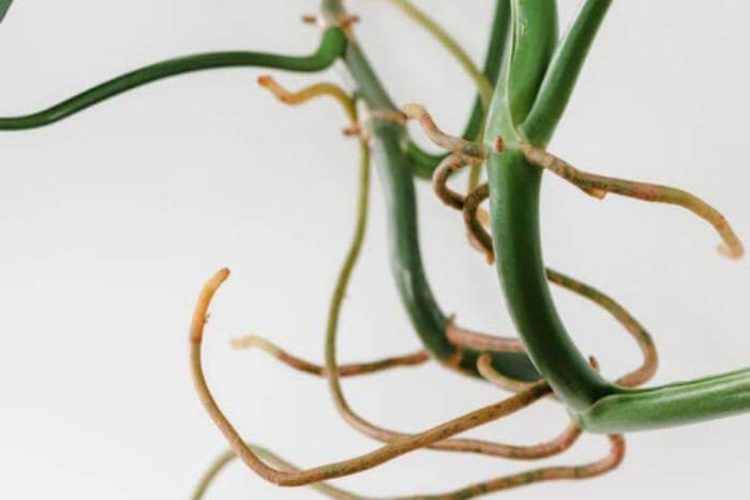
Growing up in the wild, pothos plants have roots above the ground to search for more water, oxygen, and nutrients. But what if you notice aerial roots in your Pothos? Is it a good sign? These roots are a regular growth pattern of this species. Some people even want to stimulate their development. Meanwhile, some wonder how to deal with them for their plant’s well-being.
This guide will cover everything you want to know about pothos’ aerial roots. Let’s join us to discover!
What Are Aerial Roots On Pothos?
Aerial roots are among the most interesting and distinctive characteristics of plants. They emerge above the soil and often adhere to structures like walls or trellises. But why do Pothos grow aerial roots? Aerial roots are crucial to the life cycle of the plant, but they can also be a common problem. For example, they assist the plant in climbing and reaching new heights. Plants also need them for water and nutrient absorption. Aerial roots are different from normal ones in their appearance and function.
Appearance
Pothos’ aerial roots emerge from the main stem around the point at which the leaves attach. They often begin growing near the base of the plants and are the longest there. But as the plant matures, they get longer towards the stem. Aerial roots first look like little brown stumps, but they can expand to one inch long in the air. If the aerial roots successfully detect soil and water, they may even extend further.
There are many root hairs in an aerial root. The small, finger-like hairs help the plant access more water and nutrient sources. The pothos’ aerial roots resemble long, thick tentacles. Aerial roots start with a green hue, turning brown with a tough coating over time. When your plant needs water, the aerial roots will turn grey. They look as if they are dying, yet they still live and collect water from the air. The aerial roots will become hollow, brown, and dry if they die.
Functions
Underground roots have some channels that carry water and nutrients to the plant’s roots and above-ground parts. Meanwhile, aerial roots grow above the ground, collecting living resources from the surrounding air.
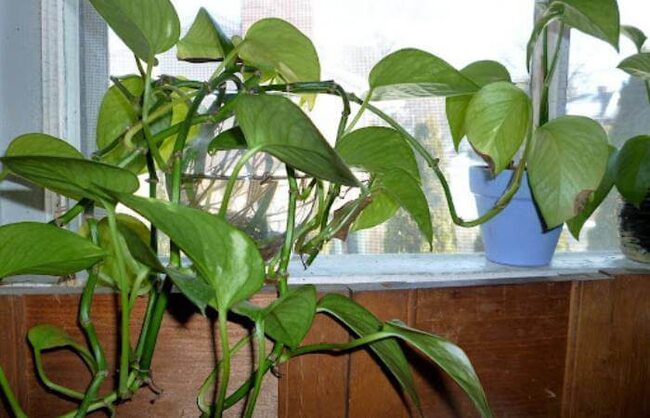
What Is The Role Of Aerial Roots On Indoor Plants?
Indoor plants don’t always grow aerial roots. They require specific conditions to develop. For example, you can’t find aerial roots on plants grown in pots because they don’t need support for climbing. Pothos’ aerial roots play a vital role in stabilizing the plant. They also aid your plant in absorbing living resources.
Support the plant
Aerial roots work similarly to normal roots in that they increase the stability of the parent plants. Vining plants and epiphytes need that kind of support to attach to a structure and grow.
More specifically, the aerial roots are anchors for leggy vining plants to attach themselves to trellis, walls, rocks, or other nearby plants. Thanks to these anchors, the plants can receive more sunlight as they are in a higher position. Moreover, they grow aerial roots to strengthen the soil roots.
Absorb living resources
When your plant can’t thrive, it will develop aerial roots to access its living resources, which include:
Nutrients
Aerial roots have the same mission as underground roots, as they help your plants absorb more nutrients. Aerial roots take nutrients from dew, mist, or rainwater that drips on the roots or the host tree. This function is prominent in species like orchids or hanging pothos. Thanks to the aerial roots, they can get more nutrients than their underground roots fail to deliver.
Moisture
Plants with aerial roots may absorb moisture straight from the surrounding atmosphere. The water source can also be rainwater, water from host trees, or water from the leaves above the vines.
Oxygen
Some plants have their roots stuck in soil with a low level of oxygen. In this case, they will grow aerial roots to absorb more oxygen from terrestrial roots. This case is typical among plants that live in ravines, bogs, coastal swamps, or marshes. You have the same problem if your pothos live in a poorly-drained potting mix.
Assist in propagation
In water or soil, aerial roots can still grow. As a result, their roots enable faster, simpler, and more efficient propagation. Aerial roots aid the plant’s absorption of the essential minerals, water, and nutrients required to develop new stems, roots, cuttings, and leaves.
How To Grow Aerial Roots As You Wish?
You can first train your plant to climb in the desired direction. Also, remember to give it the best conditions to grow its aerial roots.
Train the plant to climb
Training pothos to climb will stimulate them to grow aerial roots. This process is quite straightforward. The secret is that this plant doesn’t climb unless it has motivation. Pothos plants tend to grow onto other trees in the forest to search for light. Therefore, something should motivate it to climb if you intend to train this species.
There are several methods for stimulating your pothos plant to grow. First, note that pothos’ aerial roots need a supportive structure, such as wires, trellises, or poles. Pothos’ aerial roots also cling to walls. However, it is best to avoid doing so since it may ruin the walls and leave a scuff mark. You can put a light on the side where you want your plant to grow. The aerial roots will respond to this lighting source almost like a stimulus. Then, you will see them expand towards the light.
Give the plant ideal conditions
To stimulate the aerial roots, your plant needs optimal conditions. Hence, pay attention to the humidity, temperature, and watering routine.
Humidity
Your pothos may grow roots above the water on its long stems if you keep them in a humid environment. It seems to produce more roots in such a condition.
Temperature
Your plant will thrive in a temperature range of 70 to 90 °F. In excess of that range, your pothos won’t grow and will display symptoms like weak leaves and stunted development.
Watering
Watering is vital to every plant, and your pothos won’t be an exception. This species finds both underwatering and overwatering problematic. The risk of root rot increases if you overwater the aerial roots, since they tend to suffocate.
On the other hand, if you submerge the aerial root, you will risk moisture-stressing your plant, causing it to develop slowly. Are your pothos’ aerial roots drying? It must be due to the lack of water. The ultimate watering tip is to wait until the top few inches of soil have dried out before watering your plant.
Do not give it water when the topsoil is still wet, or your plant will suffer from root rot. Root rot refers to a condition where anoxic conditions in the media around the plant’s root system cause it to rot. Root rot often occurs because of excessive water around the roots.
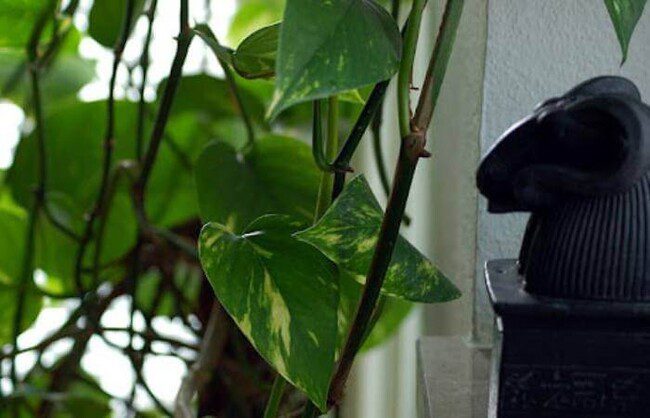
How To Deal With Unwanted Aerial Roots?
What if you don’t want aerial roots on your compact indoor plants? There are several ways to help you eliminate them without harming your pothos plant.
Trim the aerial roots
You may find aerial roots ugly, and that’s OK. Cut them off with a clean set of scissors, pruning shears, or a sharp knife. Your pothos won’t get hurt by the trimming. In fact, this treatment could encourage a stronger, lusher growth of leaves.
Make sure to trim the aerial roots as closely as you can to the stem. However, if the aerial roots grow after cutting, it won’t be a surprise. It is preferable to focus on the cause of their growth, such as giving bright, indirect light, minimising heat exposure or extreme heat, and adequately hydrating your plant.
Propagate
What will you do with the aerial root that you have cut off? Instead of throwing it away, you can use it for propagation. Here is how to plant aerial roots using this method:
Step 1: Make some stem cuttings. Each cutting should have at least three to four leaves, a node, and aerial roots.
Step 2: To avoid the spread of germs, disinfect the cutting tools between each cut of the stems.
Step 3: Pothos can be hazardous due to its calcium oxalate content. Therefore, use gloves while handling the cuttings. Also, wash your hands carefully after working with them.
Step 4: Root the cuttings in soil or water. Homemade potting media, like vermiculite, can also work in this case.
Step 5: Keep the cuttings out of direct sunlight and ensure that the soil is evenly hydrated. Propagated pothos cuttings need around three to four weeks to develop roots in water.
Step 6: Plant the new pothos in a new, disinfected pot of potting soil after new roots have grown.
Bury aerial roots
Burying the root-containing nodes is the easiest way to remove aerial roots if they don’t look good above the potting soil. This method will prevent the aerial root from growing. Moreover, it will help normal roots absorb water and nutrients from the soil effortlessly.
Conclusion
Aerial roots on pothos will help your vining plant access more nutrients, water, and oxygen for its development. They also act as an anchor for pothos vines to lean on.
Hopefully, you will find this guide helpful. Please comment in the section below if you have any questions about aerial roots. We will come back to help you solve your plant problems. Thank you for reading!
FAQs


